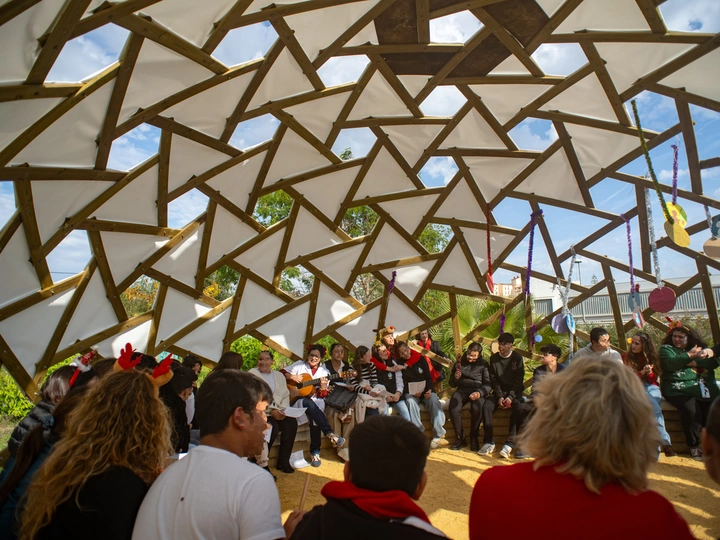Architecture WITH society

I graduated in architecture from La Sapienza University in Rome, and obtained my doctorate in architecture from the Escuela Técnica Superior de Arquitectura de Sevilla.
I moved to Seville, Spain, in 2001. There in 2010, I established my own studio: Ctrl+Z, in which I develop and apply an urban and social vision of architecture, that focuses on people and local realities.
My research generally focuses on the relationship between proposed architectural processes and existing social and bottom-up processes in a given area. From a technical perspective, the study of simple, easily reproducible systems is conducted locally, without the need for external assistance, with the aim of empowering the community as an agent of change.
Alongside the aforementioned research and teaching activities, workshops and building projects, conferences are held on related topics such as urban planning, participatory architecture, geodesic structures, reused architecture, self-built architecture, ephemeral architecture and temporary architecture, with a particular focus on social architecture.
In 2016, Ctrl+Z was included in the official exhibition of the Italian Pavilion at the XV Biennale di Architettura di Venezia. In 2017 it was included in the I Biennale d'Architecture de Lyon, and in 2021, it formed part of the central installation of the Spanish Pavilion at the XVII Biennale di Architettura di Venezia.
In 2017, my professional career was recognised with the Curry Stone Design Prize, an international award that highlights, honours and rewards architects who take a social approach to improving the daily living conditions of communities around the world.
In 2025, I carried out a transfer activity at the Van Abbe Museum (Eindhoven, The Netherlands); my professional activity has been awarded in the VI COAS Architecture & Society Awards 2025, and from April I'm substitute professor at the School of Architecture of Seville.
Fifteen years ago, starting my career, I wondered “Whether it is possible to design as part of the narratives already existing on a territory”.
Today, few dozen realized projects, research and experiences, changed my question. Over time, it has developed and expanded, opening up to new trajectories. Initially, I asked myself, “What are the best ways to do it”, but then the question reformulated itself into one that almost smacks of certainty: “Is it really possible to design while ignoring them?”.
My answer is no: not only is it inconvenient, it is not an option. Experience has taught me that you cannot, and that time will unmask those who claim otherwise.
The question that currently attracts my attention, and that I propose for the LINA’s programme is “Can the act of building be reconnected to the act of dwelling, and if so, how?”.
This research is far from merely theoretical. Its potential and applicability are demonstrated by several long-term projects. As an example, I present a project developed from it in Seville, Spain.
La Cúpula de las Letras, a project that has been built to times (In 2016 and 2024), reflects precisely on the importance of the relationship between dwelling and architectural action. The value of La Cúpula de las Letras lies in the synergies and correspondences it has been able to establish with the vocations, dreams, and needs of the courtyard's inhabitants and the surrounding neighbourhood, offering them a suitable place to live and develop together.
Such projects demonstrate the potential of considering the existing dwelling dynamics of the areas in which they are developed.
They also demonstrate the economic and socio-cultural effectiveness of proposals that are committed to promoting coexistence and cooperation; proposals that are born, based and calibrated on local realities and coordinated with the social actors already operating in the territory, in order to promote more inclusive and sustainable environments.